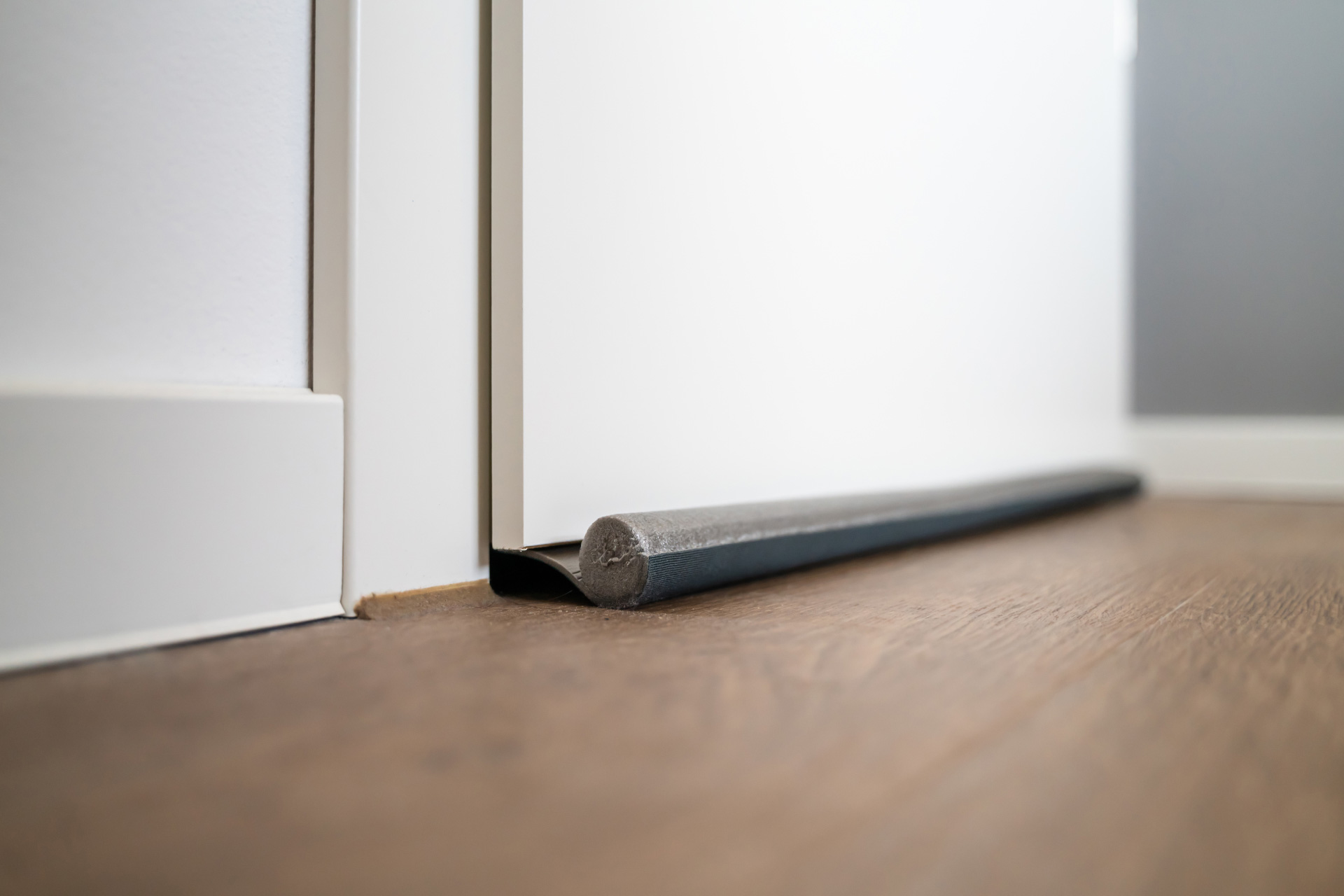Ontario winters are notorious for their bone-chilling temperatures and biting winds. While we love the beauty of a snowy landscape, the cold can easily creep into our homes through a drafty door or window. These unwelcome drafts not only compromise your comfort but also lead to significant heat loss, driving up your energy costs.
Sealing your doors is a crucial step in winterizing your home, ensuring a warm and cozy living space while reducing your energy consumption. In this comprehensive guide, we’ll explore how to seal a door for winter and prevent those pesky drafts from infiltrating your Ontario home.
Weatherstripping
The most basic solution for how to seal doors for winter, weather stripping is a key draft-proofing tool. It acts as a barrier between your door and its frame, sealing the gaps and preventing cold air from seeping in. There are various types of weather stripping available to keep warm air inside, each suited for different applications:
- V-Strip: This flexible, V-shaped weather stripping is ideal for most doors because it’s easy to install. Once you remove the adhesive backing and attach it to the door, it compresses when closed, creating a tight seal.
- Foam Tape: Compressible foam weather stripping option is an excellent affordable option for properly sealing smaller gaps around doors and windows to prevent a door draft.
- Felt: A traditional and cost-effective choice for sealing minor gaps and irregularities in older doors.
- Compression Weather Stripping: Made of rubber or vinyl, it creates a tight seal when the door closes, making it perfect for exterior doors, like sliding doors, which are often exposed to harsh weather conditions.
- Metal or Vinyl Strips: These durable options are designed for larger gaps and provide long-lasting protection against a door draft.
When choosing weatherstripping, consider the size of your door, the gaps around it, the door material, the door’s hinges, and the level of weather exposure.

Image Source: Canva
Caulk and Sealants
Even the smallest gaps and cracks around your door frame can allow cold air to infiltrate your home, impacting your home’s comfort and energy efficiency. Caulk and sealants are essential tools for sealing these openings and creating an airtight seal.
- For exterior doors: Due to its waterproof and flexible nature, silicone caulk is recommended for sealing gaps around exterior doors and windows. Its resistance to extreme temperatures and UV rays ensures a long-lasting seal, especially important in regions with cold winters like Ontario.
- For interior doors and trim: Acrylic latex caulk is a suitable choice if you’re wondering how to seal a door for winter. While less flexible than silicone caulk, it is paintable and easy to clean up, providing a smooth, finished look that also prevents air leaks.
- For big cracks and gaps: Expanding foam sealant works well for bigger cracks and gaps to stop the cold air that causes a door draft. It expands to fill any space, and can be trimmed once cured, offering versatile insulation for both interior and exterior doors and windows.
Door Sweep
The gap beneath your door is a major culprit for heat loss and door drafts during winter. A door sweep offers a simple and effective solution to seal this gap and prevent a drafty door. These brush-like or finned strips attach to the bottom of the door, creating a barrier against cold air.
If you’re wondering how to draft proof a door, here are a few different types of door sweeps that you can add to your toolkit:
- Brush Sweeps: This door sweep features thick bristles that create a flexible seal under a front door or side door. They’re easy to install and work well on smooth surfaces to prevent air leaks.
- Vinyl or Rubber Sweeps: These sweeps are more durable and can handle uneven surfaces better than brush sweeps. They’re also moisture-resistant and ideal for external doors experiencing a door draft.
- Automatic Door Sweeps: This innovative door sweep is spring-loaded and drops down automatically when the door closes, providing a tight seal. They retract when the door opens, ensuring smooth operation.

Image Source: Canva
Draft Excluder and Door Snake
For a great weather proofing alternative, consider using a draft excluder or door snake. These simple yet effective tools help solve the problem of how to seal doors for winter and can be placed at the bottom of your door to block cold air from entering.
Draft excluders are typically made of fabric or foam and come in various shapes and sizes. Door snakes, on the other hand, are long, weighted tubes that rest against the base of the door, creating a barrier against drafts.
Both draft excluders and door snakes are easy to install and can be moved from room to room as needed. They offer an additional layer of insulation for a drafty door and can help reduce heat loss and air leaks, especially in older homes where there are large gaps.
Door Thresholds
Door thresholds act as a raised barrier at the bottom of your door, creating a physical obstacle for drafts, water, and insects. They’re particularly beneficial for an exterior door or doors leading to unheated spaces like basements or garages—an accessible option if you’re looking for how to seal a door for winter.
Several types of door thresholds are available, each with advantages for your drafty door strategy:
- Wood Thresholds: A traditional and affordable choice, wood thresholds are relatively easy to install and can be stained or painted to match your door. However, they may require more maintenance and can be susceptible to moisture damage.
- Aluminum Thresholds: These thresholds are highly durable and weather-resistant, making them an excellent option for an exterior door draft. They’re also low-maintenance and easy to clean.
- Adjustable Thresholds: These versatile thresholds can be customized to fit different gap sizes, providing a precise seal. They are ideal for doors with uneven floors or gaps that change with the seasons.
Get Energy-Efficient Doors at Clera Windows + Doors
Constantly adding weather stripping, draft excluders, and door snakes can feel like a never-ending battle against the cold. If you’re wondering how to seal a door for winter and are tired of temporary fixes, it may be time for more permanent solutions.
Clera Windows + Doors, a family-run business with over 45 years of experience, offers premium ENERGY STAR®-certified doors that are built to last. Our extensive selection ensures you'll find the perfect style and design to complement your home. With our factory-direct prices, you'll get the best value for your investment.
Say goodbye to your drafty door, high energy bills, and endless DIY patch jobs. Get a free quote today and let our family help yours.







